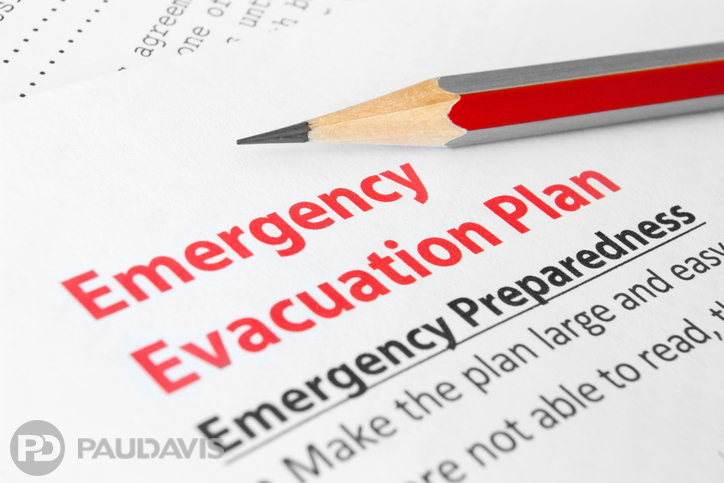
As summer turns to fall, the weather continues to make headlines. A very active hurricane season swirls unabated while ravaging thunderstorms and hailstorms spawn flooding rains and property damage. Extreme weather has become the norm instead of the exception throughout North America. Fortunately, business owners have become savvier about pre-storm preparation, including steps like partnering with Paul Davis to prepare customized Emergency Preparedness Plans (EPP) at no cost.
“Having a completed EPP in place helps tremendously if you suffer property damage, including as a result of a severe storm,” says Pam de Boer, Continuing Education Director at Paul Davis. “They are very simple to obtain. Call your local Paul Davis office and our experts lead the planning process from start to finish, with appropriate measures in place to ensure COVID-19 safety.”
A new service that Paul Davis has created specifically for business owners, the Emergency Preparedness Plan assists companies in obtaining fast, professional, targeted responses when property damage occurs, whether as a result of a severe storm or other direct damage. The EPP is comprised of information specific to your property and operations, such as emergency contacts, preferred trade and supplier partners, locations of mechanical rooms and shutoff switches and valves and a variety of additional details you and your team will need in an emergency. Plans also include your specific and special instructions pre-loss, such as areas of your property that should be prioritized, preferred responder parking areas and preferred access to the property and its structures. Paul Davis provides participating companies with plans by link or as printed copies; Paul Davis can also communicate your plan to main points of contact if an emergency occurs.
Smart businesses are also taking proactive storm-proofing measures on their commercial properties. These actions include reinforcing building envelopes: repairing roofs, anchoring gutters, strengthening doors and windows, and ensuring adequate drainage. They include protecting critical equipment and systems by relocating them to higher ground if possible, as well as backing up data, reallocating critical inventory and equipment, and ensuring key staff are prepared for remote work. Companies are inspecting critical back-up supplies, too, and requisitioning COVID-19 protection items like hand sanitizer, masks and gloves. Additionally, they are conducting disaster response drills to ensure that plans function properly and staff know what to do.
Finally, companies are selecting disaster recovery partners long before storms strike. “We recommend that customers interview and choose a disaster mitigation and recovery partner now if possible, and certainly well before the weather turns,” concludes Brad Cowan, Senior Vice President of Business Development. “Knowing who to call when the roof lifts or the shop floor floods is the best route to recovery and minimizing a storm’s long-term impacts on your business.”
Seeking fast assistance with disaster planning or, despite best laid plans, storm damage? Paul Davis promises to be onsite within four hours of a call for help.
